RA and COVID-19: Can We Go Back to Normal?

In the past week, some countries have started to relax COVID-19 restrictions and there is increasing talk about loosening things up. They call it deconfinement, which sounds oddly benign, like a Victorian lady starting to visit acquaintances for tea again after having produced the spare to the heir. But it’s not benign. I have rheumatoid arthritis (RA) and take a medication that suppresses my immune system. I am high risk of catching the novel coronavirus and for having a severe case. And the thought of easing restrictions scares the crap out of me.
There is safety in everyone being freaked out, intensely aware of the need to distance and protect each other. It is at once both incredibly tense, yet also relaxed — I know everyone else this as vigilant as I have to be. But once the pandemic moves lower on the front page and a bit later in newscasts, once the gates start opening, even if it’s just ajar, the inevitable is going to happen. People are going to relax and the pressure to be normal will be profound.
And sure, I know (hope?) that my government will not take these actions until we have the testing and reduction in cases that are needed to do this relative safely, but striving push to open up again is frightening for so many reasons.
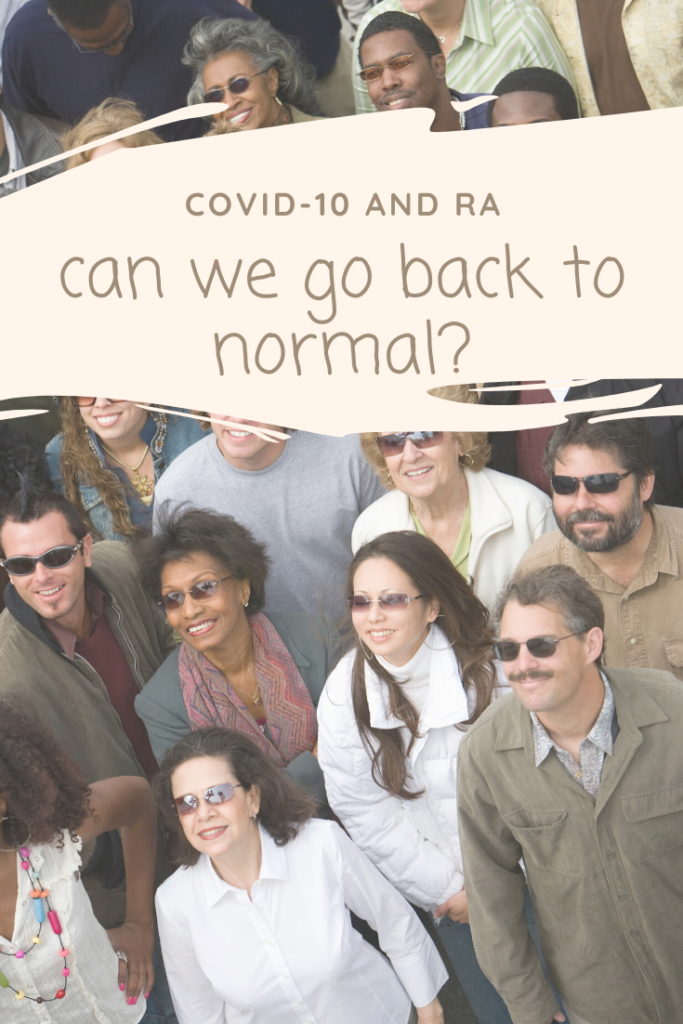
The risks of deconfinement
Everyone is talking about the perceived safety of herd immunity. When enough people have had COVID-19 and have developed antibodies, they will be immune and we will all be safer. But this is not necessarily the case. We simply don’t have the evidence. Although the World Health Organization (WHO) is says that they “expect most people who are infected with COVID-19 will develop an antibody response that will provide some level of protection,” there seems to be some evidence that you might catch it more than once.
And let’s get real. Even if there is immunity, I, and others like me, will still be a high risk for getting COVID-19, having a more severe case of it, and dying because of it.
Secondly, an unnervingly huge amount of people with COVID-19 antibodies have not had any symptoms. Early studies suggest that as many as 50 percent of people with antibodies have not had any symptoms. Unless we test simply everyone, how do we know who is safe. Or rather, “safe”?
And one last factor that looms high in my mind is the messaging from Denmark and other countries in Europe who just last week started to ease the lockdown. They were very clear on the fact that it wasn’t the end of the pandemic, but rather a transfer of responsibility from the government to the individual in terms of making decisions on how to stay safe and protect others.
That’s the point when I panicked. Because the government-mandated lockdown was due in part to people not being responsible and protective of their neighbours. Which brings us to the conversation about the second wave of COVID-19, the one that will undoubtedly emerge as we do. The experts theorize it will happen around flu season later this year. Best guesses indicate that there will be rolling versions of the lockdown as cases increase again during that second wave, and possibly again after that.
Will there be a normal for those who are high risk?
As we begin to talk about deconfinement, those of us who are high risk also need to start thinking about how we will act when this happens. Will we also begin to tiptoe outside, masked and gloved, or will we continue to self-isolate? And if the latter, for how long? When will it be safe for us to return to our normal — which never was the normal version of normal.
I think we all know that we’ll never return to what was before. What comes after a pandemic will be a new version of normal for a long time. Yet, when you look back on the 1918 pandemic, countries did eventually return to regular life again. COVID-19 is not the Spanish flu and we have no idea how it will act. But there will be a type of normal again. The question is whether those who are high risk will be part of it or if we will continue to live apart and isolated.
Opening up the economy and society again is not only about the individual protecting themselves and their friends and family protecting them, it is also about the infrastructure and support to do so. Will employers continue to provide the ability to work remotely or offer support and accommodations if someone who is high risk — or has a high risk family member — has to go to work? Will our healthy friends and family continue to show up on Zoom and Skype when they are able to resume their lives? Will we continue to be able to access our doctors through telehealth? As people who are high risk due to chronic illness, we have experienced an unprecedented addition to the ranks of people who understand what it’s like to be isolated and scared during this pandemic. We hope all these measures and the support and love will not be forgotten.
If you need a moment to breathe into a paper bag to reduce the panic, do so. But remember to wear a mask.
The same great people who created the #HighRiskCOVID19 campaign to show the faces of those who are vulnerable, have started another fantastic initiative. Look for the #OpenAtMyRisk hashtag on social media to connect and share our stories of being at risk.
Tag: .disability, #highriskcovid19, chronic illness, coronavirus, COVID-19, deconfinement, normal, pandemic, rheumatoid arthritis
9 Comments
Read More
Discover what else I've been writing about...

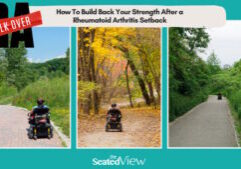
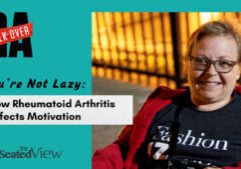






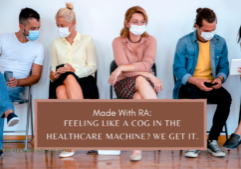

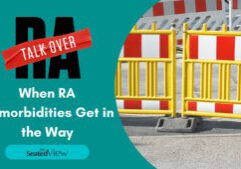

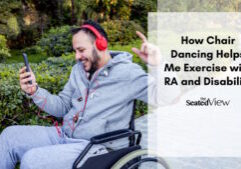


For me, the scariest part is other people who say they will refuse to wear masks. The masks don’t protect you; they protect other people from your germs. As someone who is in the high risk group, I’ve taken this very seriously. I think life will be very different for at least the next year.
Much like you, I also have a compromised immune system due to a previous condition and the current medication I have to take. The thought of easing restrictions too quickly in response to public pressure, rather than based more on the scientific evidence is truly frightening. We can only hope that common sense will prevail in the end so that decisions are made based on facts, not popular view.
There is a risk with everything. I believe some states are ready to open back up, while others are thinking about it more. I believe we take it slow.
It is such a complicated matter. Also a little unknown too with this being a new virus, so who knows when normal will return x
I too am of the opinion that it is too early to open out completely. It should be ideally in a phased manner depending on the zone or state and where they stand in terms of numbers of people still infected. The elderly and those with prexisting diseases are at high risk and need to be very cautious.
I will say that the atmosphere here seems to be a little different than in many other areas of the world. While there are certainly people around here that think this is all a joke, many people in my small town seem to be taking this quite seriously. They are talking about an ‘exit plan’ here in the province of Ontario, and from what I’ve read, it is pretty careful in slowly opening things up rather than just jumping into ‘normal’ once again. I think that’s going to be key – slowly opening things while tracking the impact so that we avoid making a HUGE mistake if this turns out to be just that.
I understand the panic as I am also on the ‘high risk’ list myself. The idea that we could be losing what little security we have with the current guidelines in place is definitely scary.
For me the virus and pandemic are not as scary as people. It became obvious people refuse to follow the rules and if they don’t agree with something they are not willing to budge even a little out of comfort zone. It breaks my heard seeing tons of people on the streets: no masks, kids, elderly people and runners even though it is specifically said not to go running in my region
I’m struggling with similar thoughts. My mom lives in Switzerland, where they want to open schools on 11th May. She’s a teacher and lives with a high-risk partner. How will he able to stay safe while she’s forced to go teach? It’s a very tricky situation for both governments and individuals. At the moment, the best we can do is be sensible and try to protect our loved ones. I hope people in the vulnerable group can find trustworthy friends/ family members to rely on to bring them food and keep in touch safely. That’s what I’m trying to do with my volunteer lady.
There have been 50 cases and 2 deaths in the county I live in. Which makes it all hard to take serious at times. That’s nothing compared to many other places like New York. The weird thing is that you’re talking about your area lifting restrictions, and it seems like here they are getting more strict instead. I don’t quite understand that, and feel like it should have been a lot more strict in the beginning. I’m still careful and avoid people, but it is easy since I work from home too. I can’t quite imagine the kind of panic you’re experiencing due to having RA and things starting to reopen again. It is such a tough situation for everyone. I see people like you struggling with fear, and I see small business owners in the same boat, but for financial reasons. All I can personally do is continue to remain socially distant and try to help people I know with compromised immune systems by offering to pick up groceries or anything else they may need so they can stay at home until they’re ready to go out again.